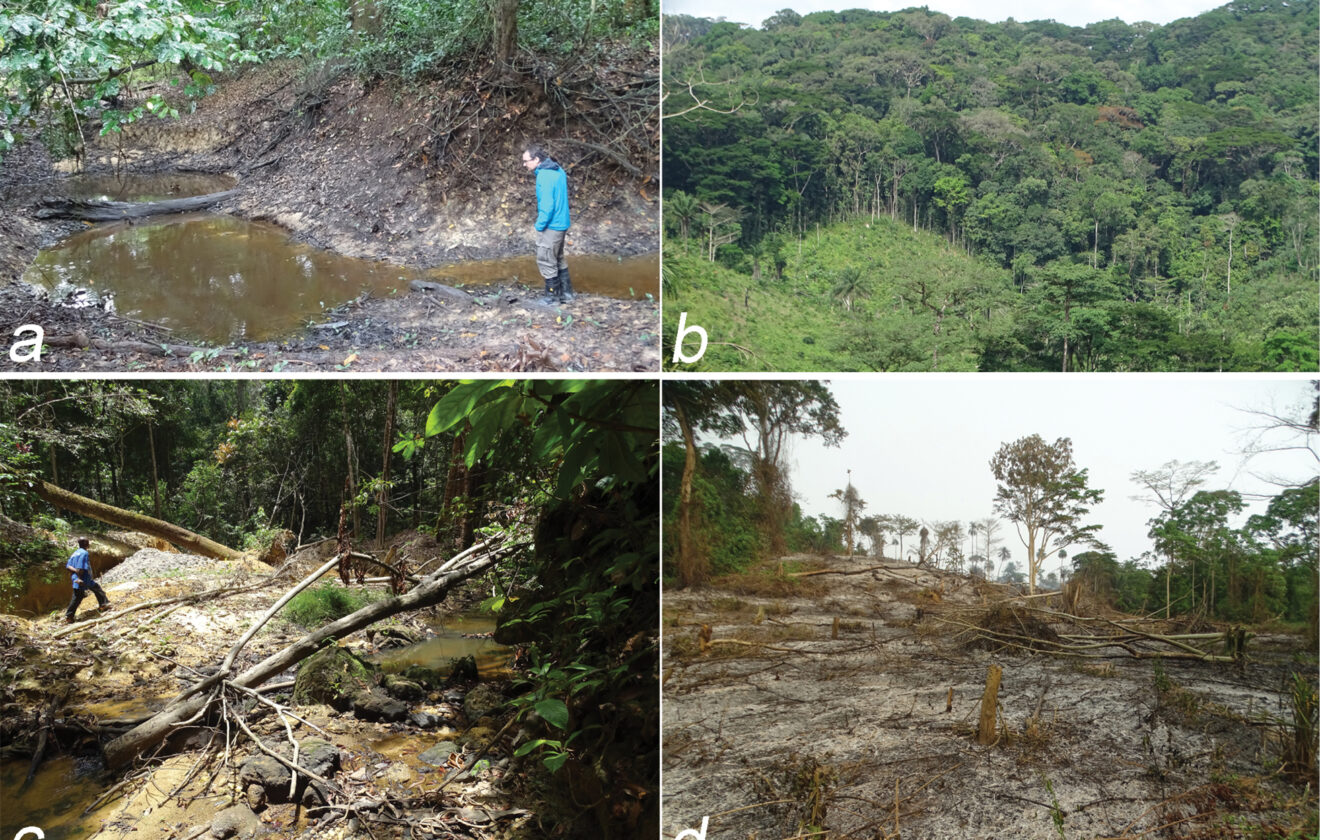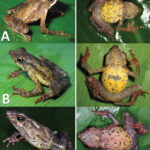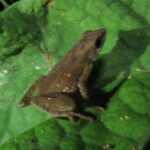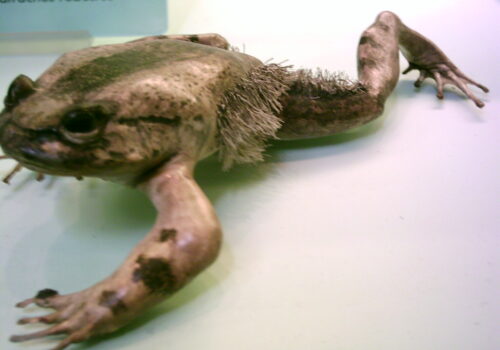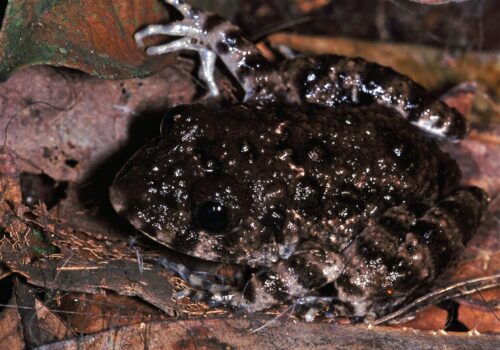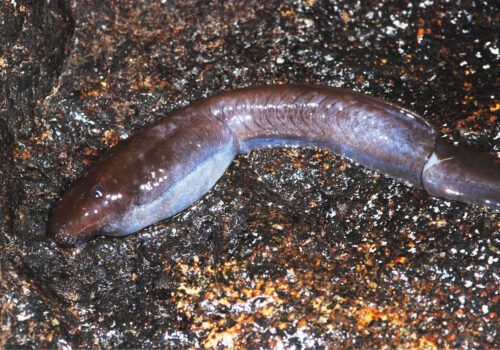- Exploring the Enchanting Life of Leptopelis boulengeri: The Graceful Tree Frog of Africa’s Rainforests
Exploring the Enchanting Life of Leptopelis boulengeri: The Graceful Tree Frog of Africa’s Rainforests#
Deep within the lush green canopies and moisture-laden forests of Central Africa lives an amphibian of remarkable charm and mysterious beauty—the vibrant and elusive Leptopelis boulengeri. This petite tree frog, often overlooked amidst the buzzing biodiversity of tropical rainforests, is a biological marvel adapted beautifully to its arboreal world and infused with captivating behaviors that delight and fascinate naturalists and enthusiasts alike.
Commonly known as Boulenger’s tree frog, this species boasts not only a colorful array of natural adornments but plays a pivotal ecological role in maintaining the delicate balance of its rainforest habitat. From captivating breeding calls that drift softly through the humid twilight air, to its clever camouflage among verdant leaves, this special amphibian exemplifies the wonders and mysteries of nature waiting to be discovered.
Taxonomy and Classification#
Found within the highly diverse family of Arthroleptidae, Leptopelis boulengeri belongs to a genus celebrated for its notable visual diversity and arboreal lifestyle—the genus Leptopelis. First described scientifically in 1906, this frog’s name honors George Albert Boulenger, a Belgian-British zoologist renowned for his extensive herpetological collections and research in the late 19th and early 20th centuries.
The genus Leptopelis itself—often grouped amongst Africa’s celebrated tree frogs—is tremendously diverse, with over 50 described species occupying various ecological niches throughout Sub-Saharan Africa. Each of these frogs has perfectly adapted to its respective micro-habitats, and yet Leptopelis boulengeri stands out distinctly, both visually and ecologically.
Natural Habitat#
Leptopelis boulengeri primarily calls home the humid, tropical rainforests stretching across regions of Cameroon, Gabon, Republic of the Congo, Equatorial Guinea, Nigeria, and parts of Central African Republic. Within this sprawling verdant landscape, the frog demonstrates a fascinating preference for lowland forests as well as swampy, moisture-rich zones near forested streams and wetlands.
An Arboreal Paradise#
Climb cautiously a few meters upward into its leafy world, and you’ll find surfaces draped generously with moss and lichens—characteristics of high humidity and the ideal terrain for Leptopelis boulengeri to thrive. Here in these arboreal habitats, cloaked in perpetual mist and shadowed by towering canopies, this tree frog’s presence largely goes unnoticed, thanks to its extraordinary camouflage. However, careful, patient eyes may occasionally glimpse these spectacular amphibians basking quietly on large, broad leaves, sheltered beneath overhanging foliage.
Within rainforest environments, the frog elegantly exploits the stratified tree canopy and the humid understory—a potent habitat that supports innumerable life forms, including insects, arthropods, and arachnids—the basis of Boulenger’s tree frog’s dietary needs.
Physical Characteristics#
At first glance, Boulenger’s tree frog captivates observers with its modest yet distinctive appearance. Typically reaching only around 4 to 6 centimeters in body length, its petite size does nothing to diminish its vivid presence. With large, expressive eyes that seemingly reflect moonlight, this agile frog can swiftly scout its surroundings for potential predators or prey, its senses finely attuned to its environment.
A Complex Palette of Camouflage#
Adorned with an enchanting mix of colors, individuals can vary tremendously—from pale green and beige hues to deeper olive tones marked intriguingly with darker blotches or bands. These color variations perfectly mimic sunlight patterns and shadow dances playing upon leafy foliage, effectively cloaking the frog from predators while ensuring successful ambushes of insect prey.
One particularly enticing feature of Leptopelis boulengeri is its distinctively smooth yet slightly granular skin, appearing moistly radiant due to glands secreting skin moisture crucial for amphibians’ respiratory function. Luminescent yellows, greens, and mild browns intermingle on their skin, serving both as camouflage and captivating artwork of evolutionary adaptation.
Behavior and Life Cycle#
Beyond unassuming daytime concealment, the nocturnal world brings forth the gentle chorus of Boulenger’s tree frog as males vocalize to establish territory and court nearby females. In dense forests resonating with myriad animal calls, their unique vocalizations pierce gently through—melodic chirping “clicks” repeated rhythmically, forming an alluring nighttime symphony that is heard clearly above the darkness-engulfed forest floor beneath.
A Unique Breeding Ritual Amidst Leaves and Rain#
During the advent of the year’s heavy rains—an essential breeding cue signaling favorable conditions—males intensify their melodious calls to attract mates. Once a female selects her suitor, their paired embrace, known as amplexus, occurs discreetly in the damp foliage above flooded forest pools and standing water sources.
Remarkably adapted, females gracefully lay gelatinous egg masses directly onto leaves suspended atmospherically. As tadpoles hatch from these eggs, they carefully fall into pools of rain-water beneath, initiating their aquatic life. Over the following weeks, these tadpoles develop, flourishing among fallen leaves and underwater vegetation, gradually emerging with limbs, lungs, and readiness to embrace their arboreal destiny.
Ecological Role#
Boulenger’s tree frog plays an indispensable ecological function within its rainforest ecosystem. As both predator and prey, it contributes significantly towards maintaining ecological balance. Dietarily, the frog plays a pivotal role in managing insect populations, consuming beetles, ants, termites, moths, spiders, and small arthropods abundant within its canopy realm.
Simultaneously, it occupies an intermediate position on the food web, providing nourishment to numerous forest predators, including snakes, birds, small mammals, and larger amphibians. Such complex predator-prey relationships affirm this frog’s undeniable importance as an integral participant in the health and diversity of its habitat, indirectly assisting forest regeneration and ecological stability.
Threats and Conservation Status#
Currently, the International Union for Conservation of Nature (IUCN) classifies Leptopelis boulengeri as “Least Concern,” reflecting its seemingly stable population across widespread rainforest ranges. Despite this reassuring status, scientists and conservationists remain vigilant, aware that habitat loss and climate change effects profoundly endanger ecosystems as complex and sensitive as Central Africa’s rainforests.
Deforestation and Habitat Disturbances#
Increasing deforestation in the region to accommodate logging, urban expansion, agriculture, and human activity poses a significant potential threat. Fragmentation of continuous habitats disrupts the connectivity required for populations’ genetic diversity and migration pathways, increasing vulnerability to extinction. Furthermore, climatic shifts prompting changes in rainfall and temperature lead to reproductive issues and shifting availability in the frogs’ preferred insect prey.
Conservation initiatives regularly emphasize stricter protection measures for habitats, highlighting ecosystem services provided by frogs as bioindicators, pest managers, and contributors to biodiversity health. Supporting ongoing preservation of dense rainforest canopies is pivotal for ensuring the long-term survival and prosperity of species such as Leptopelis boulengeri.
Cultural and Scientific Significance#
While Boulenger’s tree frog may not hold direct cultural symbolism among indigenous communities, it contributes significantly towards essential scientific endeavors. Amphibians worldwide are recognized as essential bioindicators—organisms sensitive to environmental changes, alerting researchers early to ecosystem disturbances.
Scientifically, studying the ecological interactions, adaptations, and reproductive behaviors of frogs like Leptopelis boulengeri helps deepen our understanding of biodiversity, ecosystem health, and climate change impact. Continued research contributes to invaluable conservation strategies, ensuring Africa’s rainforests remain vibrant ecological cornerstones for countless species.
Conclusion: The Call of Conservation#
Leaping gracefully across the branches and leaves of Central Africa’s lowland rainforests, Leptopelis boulengeri encapsulates nature’s delicate balance, intriguing complexity, and breathtaking beauty. Their presence within the shadowed depths of forest canopies serves as both a subtle indicator of environmental health and a potent reminder of our shared responsibility towards biodiversity guardianship.
As advocates, students, or curious explorers of the natural world, cultivating our knowledge, celebrating these remarkable creatures, and supporting active conservation efforts must rise to the forefront. Let the melodic nighttime chorus of Boulenger’s tree frogs inspire us toward collective stewardship: protecting and cherishing the wondrous tapestry of life in Africa’s irreplaceable rainforests.

